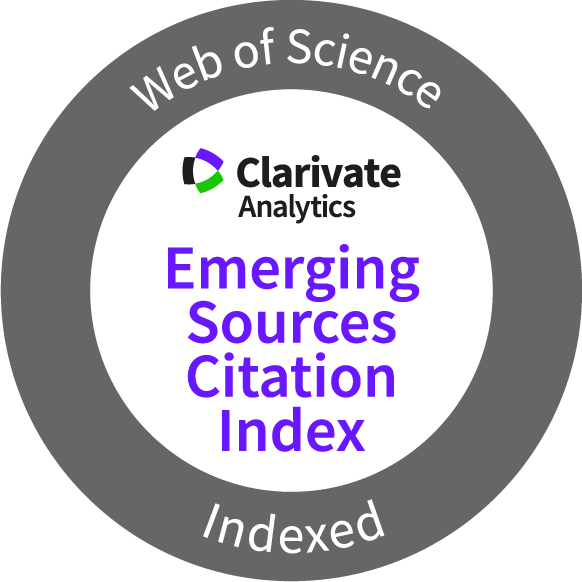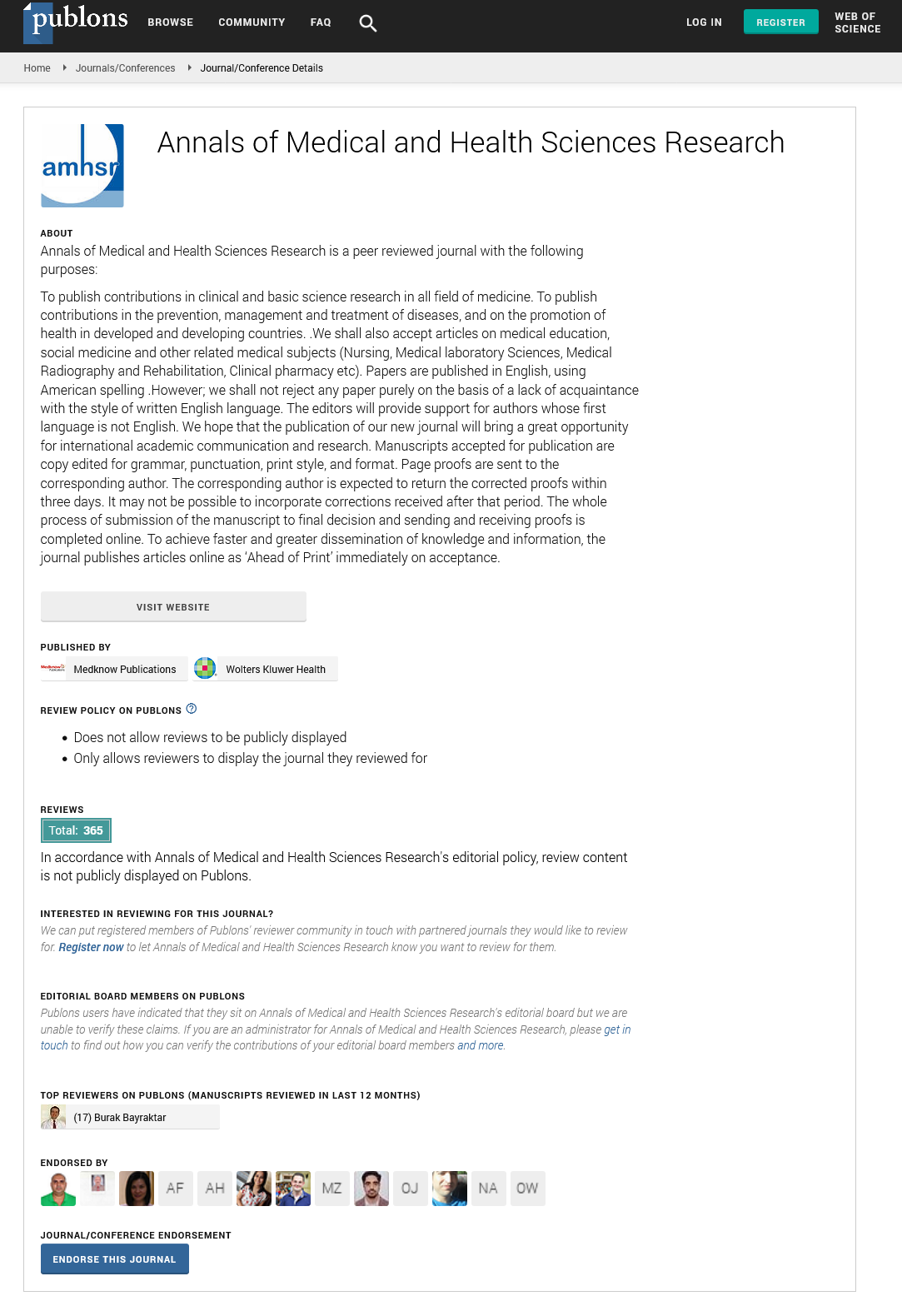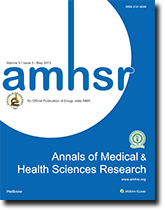A Review on Medicinal Uses of Artemisia roxburghiana Plant
Received: 07-Jun-2024, Manuscript No. amhsr-24-131933; Editor assigned: 10-Jun-2024, Pre QC No. amhsr-24-131933 (PQ); Reviewed: 24-Jun-2024 QC No. amhsr-24-131933 ; Revised: 01-Jul-2024, Manuscript No. amhsr-24-131933 (R); Published: 08-Jul-2024
Citation: Saini H. A Review on Medicinal Uses of Artemisia roxburghiana Plant. Ann Med Health Sci Res. 2024;14:1001-1004
This open-access article is distributed under the terms of the Creative Commons Attribution Non-Commercial License (CC BY-NC) (http://creativecommons.org/licenses/by-nc/4.0/), which permits reuse, distribution and reproduction of the article, provided that the original work is properly cited and the reuse is restricted to noncommercial purposes. For commercial reuse, contact reprints@pulsus.com
Abstract
Artemisia roxburghiana plant belongs to family Asteraceae and commonly known as Roxburgh's wormwood. Artemisia roxburghiana's many parts like leaves, aerial part used for different diseases. Artemisia roxburghiana contains sesquiterpene lactone, caryophyllene oxide and cis-Elemone. The aim of this review was to analyze the pharmacological and medicinal studies focused on Artemisia roxburghiana plant. Many author's discovers different pharmacological activities of Artemisia roxburghiana plant about their antidia sebetic, antioxidant, anti inflammatory, antimicrobial, antihelmnthic properties. Some researchers also describes that Artemisia roxburghiana plant also used for the treatment of skin allergies and skin diseases. In this review we summarizes the medicinal uses of the plant Artemisia roxburghiana and it's pharmacological actions. In this review we studied the geographical distribution, morphological features and medicinal uses of Artemisia roxburghiana plant. Data for this review is collected from various text books and from different search engines.
Keywords
Artemisia roxburghiana; Antidiabetic; Leaf extract
Introduction
Artemisia is a wind pollinated cosmopolitan genus, mainly distributed in temperate regions of high and low latitude of Northern hemisphere [1]. Artemisia species are mostly herbs, and sometimes shrubs and with strong aroma. The plant body often densely hairy. In this plant herbaceous involucral bracts are present. Receptacles of this plant are convex or flat and naked or covered by hairs. Artemisia plant corolla color is yellow or green and rarely brown, disk florets are bisexual of this plant [1].
The genus found all over the world particularly in the northern hemisphere's temperate zones, however some species of Artemisia plant also found there. In Himachal Pradesh and uttarakhand two subalpine regions of India [2]. This plant is endemic and used as antipyretic tonic and for skin allergies. Many aromatic and medicinal plants are important source of many phytochemicals and secondary metabolites which have wide range of applications in many diseases [3].
Artemisia roxburghiana
Geographical distrubution
Artemisia genus having wide range of medicinal uses Artemisia roxburghiana is the most important species of family Asteraceae (sunflower) family [4]. Artemisia roxburghiana also known as Roxburgh's wormwood there is more need of more pharmacological and phytochemical investigation of this plant because chemistry of this species has not investigated comparison to other species of this plant [2]. Artemisia roxburghiana plant has many vernacular name in India like nagodona in Hindi, kunja in Garhwali, Roxburgh's wormwood in English, nagadaman in Sanskrit. Artemisia roxburghiana plant grows as a perennial herb in the Himalayas (1000 m-4300 m) in Garhwali region 2,205 m of height present [2,3]. The major components in Artemisia roxburghiana essential oil were caryophyllene (18.4%), eugenol (16.2%), from bhaldan uttrakhand. Crude extracts of Artemisia roxburghiana plants indicates presence of metabolites like glycosides, flavonoids, phenols and saponins etc [5]. Which possess many medicinal and pharmacological properties Artemisia roxburghiana possess many pharmacological activities. Artemisia roxburghiana plant has been reported to be an important source of many bioactive compounds such as artemisinin, scopoletin and taraxeryl acetate. It showed anti-protozoal, anthelmintic, anti-inflammatory and antidiabetic activities in various experimental models [2]. It has beenfound as one of the most used traditional medicinal plants in Pakistan [4]. The water extract obtained fromthe leaves is used by the natives of the Himalayan region against various health problems such as malarial fever, rheumatism, dysentery. Artemisia roxburghiana plant also used as an ornamental plant in gardens and as a medicinal plant in skin diseases. Artemisia plant is also used as natural insect repellent in agriculture and as natural dyes [6]. In this plant presence of alkaloids, phenolic, flavonoids, terpenoids, reducing sugars, glycosides, steroids, carbohydrates and steroids was seen in all the extracts. Artemisia roxburghiana cells had irregular sinuous anticlinal walls [7]. Different combinations of stomata occur on the same surfaceof the leaf. The basic stomatal type is adaxial anomocytictype. In addition to anisocytic, diacytic, tri, tertacytic stomataare recorded. Pharmacognostical characters, of the Artemisia plant when stem cut into the section of petiole following features were observed likevascular bundles, xylem, phloem, cambium cell, upperepidermis, lower epidermis and polygonal cells. Pluricellular covering trichomes and clavate trichomes are importantdiagnostic feature found in Artemisia roxburghiana leaves [2].
Geographical Distribution- Roxburgh's wormwood plant were found in the open grades of Himalayas from Pakistan to Nepal at (1000 m-4000 m) Artemisia is primarily found in temperate regions of mild to high latitude in the northern hemisphere and has only a few members in the southern hemisphere [4]. It also contains dry and semiarid climatic landscapes. Its center of speciation lies in central Asia with the Mediterranean region and north west America serving as it's subsidiary areas of speciation [4]. However some species can also be found three in Himachal Pradesh and Uttarakhand two subalpine regions of india. It is well distributed as wild population located on shady rocky humid soils, dry open slopes on the foothills of Indian Himalaya at altitudes of 1000 m-4300 m [2].
Anti-diabetic Activity
Antidiabetic activity of this plant is evaluated by using Protein Tyrosine Phosphatase 1B (PTP1B) as a validated target for the cure of diabetes [8]. In this study various compounds isolated as active principle from crude extracts of aerial parts of Artemisia roxburghiana plant.Molecular docking technique is used to investigate the mechanism behind PTP1B inhibition of isolated compounds from Artemisia roxburghiana. In this ursolic acid, betullinic acid, betulin and taraxeryl acetate were active PTP1 B principles with IC 50 values [8].The antidiabetic activity of Artemisia roxburghiana attributed due to PTP1B inhibition by triterpene constituents, betulin, betullinic acid and taraxeryl acetate [8].
Ankit Kumar aimed to discover the traditional use of the plant in the diabetes mellitus. In vitro studies were conducted using α-glucosidase and α-amylase assays activities for antidiabetic activity. The aqueous ethanol extract of aerial parts of Artemisia roxburghiana exhibit α-glucosidase inhibitory activities with IC 50 values compared to acarbose respectively. In vivo studies streptozotocin-nicotinaminduced diabetic wistar rats were used. In this Artemisia roxburghiana extract shows glucose lowering effect at the doses of 200 mg/kg and 400 mg/kg in dose dependent manner with acarbose (10 mg/kg) was used as a standard drug [9].
Alloxan-induced Anti-diabetic study: In this method researchers was used to investigate in-vivo antidiabetic potential of Artemisia roxburghiana extracts on Wister albino rats. In this adult male Wistar albino rats with a body weight of approximately 250 g were used for the experiment [1]. In this experiment Diabetes was induced by a single injection of Alloxan monohydrate 150 mg/kg and the fasting blood glucose level of 220 mg/dL–500 mg/dL were considered as diabetic. Prepared extracts of Artemisia roxburghiana were administered orally at the concentration of 5 mL/day Blood glucose levels were measured by Glucometer on 11th, 22nd and 30th day of treatment period. A graph was plotted blood sugar vs time for the investigation of the antidiabetic activity [1].
α–Amylase inhibition Assay: α–Amylase inhibition assay was performed in 96 well plate. 15 μL of potassium phosphate buffer (pH 6.8) and 25 μL of α-amylase enzyme was added in all wells.for antidiabetic activity. After that 10 μL of sample was added along with 40 μL of Starch solution. The percentage inhibition of α amylase was calculated by the following formula[1]:
Inhibition =(ODx−ODy)×100
(ODz−ODy)×100
ODx=Absorbance of sample
ODx=Aborsorbance of negative control
ODx=Aborsorbance of blank
Anti-helmnthic Activity
Artemisia plant is well known for their antihelmnthic properties. In this study they used Artemisia roxburghiana and Artemisia indica against mixed infection of git nematodes in small numinats. In this five different concentrations (50,25,12.5,6.25 and 3.75 mg/ml) used by negative control and positive control (albendazole 10%) were carry out the egg batch inhibition assay and adult mortality assay [10]. The baermann technique used for the larval mortality assay in the experiment. Results showed that at concentrations of 50 mg/ml Artemisia roxburghiana shows maximum antihelmnthic activity by egg hatch inhibition adult worm mortality assay. It has been reported that both plants exhibit anthelmintic activity and further evaluation of these plants should be carried out to purify the active ingredients for anthelmintic activity. Moreover, the decoctions of these plants could be used to GINs after confirming anthelmintic properties through in vivo experiment [10].
Anti-inflammatory Activity
A In this study by Bibi et al., anti inflammatory activity of Artemisia roxburghiana was investigated by inducing formalin into right hand paw of albino mice which shows edema [1]. In this they used right hand paw edema method [1]. They used male albino mice body weight of 35 g-40 g each 49 Inflammation induced by giving single in injection of 100 μl (0.1) ml of 2.5% freshly prepared formalin solution. The solution injected into right hand paw for inducing inflammation .As for standard drug at concentration of 3 mg/kg body weight dexamethasone is used. The extracts of Artemisia roxburghiana were administered orally for period of one week. The mice paw thickness was recorded from 0 to 6 day for evaluating the plant extract activity. The inbihibitin of edema is calculated by this given equation:
Inihibition of edema=(ODx−ODy)(ODz−ODy)×100
ODx= Absorbance of sample
ODy= Absorbance of negative control
ODz=Absorbance of blank
Anti-oxidant Activity
Antioxidant activity of Artemisia roxburghiana showed by Total Antioxidant Capacity (TAC) assay, By Radial scavenging activity (2, 2’-Diphenyl Picrylhydrazyl radical scavenging activity) and Total Reducing Power (TRP) of Artemisia roxburghiana extracts at final concentration of 400 μg/mL is considerably effective [1].
By DPPH (2, 2’–Diphenyl Picrylhydrazyl) free radical scavenging assay The 2, 2–Diphenyl Pi crylhydrazyl (DPPH) radical scavenging assay was carried out by using the standard procedure with slight modifications.The samples showing percent scavenging of DPPH more than 50 were further analyzed at lower concentration for calculation of IC50 values. Percentage scavenging of the DPPH free radical was measured using the following equation for antioxidant activity [1].
DPPH radicalscavenging=1-absorbance of sample×100
1-absorbanceof control ×100
Total Antioxidant Capacity (TAC) Assay: TAC assay was performed by using phosphomolybdenum method. In this Dimethyl sulfoxide (DMSO) was used as negative and ascorbic acid used for final concentration 50 μg/mL as standard. The graph was plotted extracts vs. μg/mL concentration of ascorbic acid [1].
Total Reducing Power (TRP) Assay: In this A mixture of Artemisia plant extract, 200 μL phosphate buffer (0.2 M, pH 6.6) and 250 μL potassium ferricyanide (1%) was incubated at 50℃ for 20 minutes. Avd then adding 200 μL trichloroacetic acid it was then centrifuged at 3000 rpm for 10 min [1]. After that the supernatant was mixed with 50 μL FeCl3 (0.1%). The absorbance was taken at 630 nm in UV-Visible spectrophotometer. Ascorbic acid (100 μg/mL as final concentration) was used as positive standard and Dimethyl Sulfoxide (DMSO) as negative control [1].
The study by Kumar A et al., present aims to establish the microscopic identification of Artemisia roxburghiana, plants characteristics of its essential oil and evaluate its antioxidant effect [7]. In this microscopic characterisation of the leaf, stem and root of the plant was carried out using a compound microscope under 4x, 10x, 40x and 100x magnification. From this essential oil was isolated by hydro-distillation method and characterised by Gas Chromatography-Mass Spectrometry (GCMS) analysis. Anti oxidant activity of this plant evaluated by using DPPH assay. In this they used hydroalcholic extract and essential oil extracted from aerial parts of the plant. The GCMS studies found α-eudesmole (6.52%), trans sabinene hydrate (6.02%), Artemisia ketone (5.97%) and 1,8 cineole (4.92%) as the major volatile constituents present in the essential oil. The hydro-alcoholic extract of the aerial parts of this plant showed DPPH scavenging activity with an IC50 value of 6.90 ± 1.23 mg/mL when compared with standard rutin (IC50=0.65 ± 0.11 mg/mL). This study has successfully established the methods for microscopic characterisation and antioxidant activity of Artemisia roxburghiana [7].
Anti-protozoal Activity
In a search for new plant-derived biologically active compounds against protozoan parasites, an ethnopharmacological study was carried out to evaluate extracts from selected 17 traditional medicinal plants including Artemisia roxburghiana and many other plant which were used by healers from the Garhwal region of North West Himalaya for the treatment of protozoal infections and fever including malaria.
This study utilized extracts of Artemisia roxburghiana and several other plants like Roylea cinera, Leucas cephaletes and Nepeta hindostana for antiprotozoal activity. They used modified (3H)-hypixanthine incorporation assay for experiment. By in vitro activity against erthrocytic stage of Plasmodium falciparum they used choroquine and pyrimethamine resistant K1 strain for standard. Tryparosoma cruzi strain performed activity on infected rat skeletol myoblast S (L6 cells) that seeded in 96 well microtitre plates. Trypanosoma brucei rhodesiense was performed on STIB 900 strain. As resulted the chloroform extract of Artemisia roxburghiana showed more activity and selective extract for treatment of Plasmodium falciparum. Artemisia roxburghiana (IC 50 value of 0.42 g/ml) showed most effect on Plasmodium falciparum. Methanol and water extracts from all plants investigated and found inactive against all parasites tested. These results support investigation of components of traditional medicines as potential new antiprotozoal agents.
Hyperlipidimic Activity
An in vivo study revealed that betulin, a keycompound of the plant Artemisia roxburghiana has potential to inhibit thematuration of sterol regulatory element-binding proteins, which required for cholesterol and fatty acidsbiosynthesis [2]. In this study found a decrease in thebiosynthesis of cholesterol and fatty acids. Besides, this molecule ameliorated fat dietinduced obesity, decreased the lipid contents in serumand tissues and increased insulin sensitivity and reducedthe size and improved the stability of atherosclerotic plaques [2].
Anti-cancer Activity
Various preclinical studies suggested that betulin is effective against a variety of tumours. It has been found that the compound betulin which is found in Artemisia roxburghiana plant causes sometypes of tumour cells to start apoptosis and slowdown the growth of tumour cells. Like, taraxerol, a parent compound of taraxerol acetate was found effective in inhibiting the AGS cell proliferation. It arrested the human gastric carcinoma AGS cells at G (2)/M stage at 110 μmol/L and elevated the population of AGS cells arrested in G(2)/M phase. The molecule betulin also promoted early cell apoptosis rate from 4.45% to 10.29% in AGS cells at a similar concentration.
Conclusion
Artemisia roxburghiana plant is widely used for many diseases. This plant shows many pharmacological activities like antidiabetic, antioxidant, anti-inflammatory and antihelmnthic activity. It contains sesquiterpene lactone, caryophyllene, artemisin and other compounds which possess biological activities. As a result the pharmacological activities of this plant for treatment of many diseases were discovered. Antidepressant and nootropic activities of this plant for further research can be investigated. Studies shows Artemisia roxburghiana plant's medicinal uses in humans. Artemisia roxburghiana plant is a source of valuable natural products for pharmaceutical industries and can be used for identification and isolation of novel compounds which leads toward drug discovery for treatment of more serious and complicated diseases. The earlier literatures showed that all parts of the plant are effective against skin disorders which should be evaluated clinically. These plants showed variation in their constituents when collected from different altitude and seasons hence, there should be an optimum time, temperature and habitation for the harvesting of A. roxburghiana for medicinal purpose. The plant was found to be a rich source of essentialoil which contains a variety of bioactive compoundssuch as curcumene, ocimene, limonene and terpinene. This oil can be used commercially for the perfumeryand soap industries as well as for the Panchakarma therapy and body massage. Hence, on the basis of above studies, A. roxburghiana can be developed as anew drug in future mainly against malaria, obesity and diabetes due to presence of various bioactive compounds such as artemisinin, betulinic acid, betulin, scopoletin, β-sitosterol, apigenin and quercetin derivatives.
References
- Bibi S, Ahmed Z, Dilawar S, Iqbal M, Sheikh SH, et al. Antidiabetic, anti-inflammatory and antioxidant activity of Artemisia roxburghianaalong with its qualitative and quantitative phytochemical Screening. Advances in Basic Medical Sciences.2021;5:19–24.
- Kumar A, Aswal S, Semwal RB, Chauhan A, Semwal DK. Insights on the pharmacological, phytochemical and ethnobotanical aspects of Artemisia roxburghiana: a rather less explored but therapeutically important species of lower Himalayas. Phytochem Rev. 2019;18:199–214.
- Kumar N, Saxena G, Goswami R, Pant A, Sameul A. Pharmacognostical and standardization parameters of Artemisia roxburghianaWall. ex Besser (Aerial parts). 2018; 7: 524-527.
- Nadeem M, shinwar ZK, Qaisar M. Screening of folk remedies by genus Artemisia based on ethanobotanical surveys and traditional knowledge of native communities of Pakistan. Pakistan journal of botany.2013;45:111-17.
- Bansal V, Chaudhary PR, Ankita KM, Sati A. A review on antioxidant and antimicrobial properties of some medicinal plants of Indian Himalayan Region. Indian Journal of Natural sciences. 2023;44.
- Luo DY, Yan ZT, Che LR, Zhu JJ, Chen B. Repellency and insecticidal activity of seven Mugwort (Artemisia argyi) essential oils against the malaria vector Anopheles sinensis. Sci Rep. 2022;12:5337.
[Google Scholar] [PubMed]
- Kumar A, Semwal R, Chauhan A, Semwal RB, Andola HC, et al. Microscopic identification, GC-MS analysis of essential oil and antioxidant activity of Artemisia roxburghiana. Journal of Current Science and Technology. 2023;13:36–45.
- Raza MS, Ishtiaq,Hizbullah SM, Habtemariam AM, Mahmood A, Collina S, Inamullah K. Protein tyrosine phosphatase 1 B inhibitors isolated from Artemisia roxburghiana. Journal of enzyme inhibition and medicinal chemistry.2015;31:563-A.
[Crossref] [Google Scholar] [PubMed]
- Kumar A, Aswal S, Chauhan A, Semwal RB,Singh R, et al. Antidiabetic effect of aqueous-ethanol extract from the aerial parts of Artemisia roxburghiana. Natural product Research. 2020.1858414.
[Crossref] [Google Scholar] [PubMed]
- Khan S, Afshan K, Mirza B, Miller JE, Manan A. Anthelmintic properties of extracts from Artemisia plants against nematodes. Trop Biomed. 2015;32:257-68.




 The Annals of Medical and Health Sciences Research is a monthly multidisciplinary medical journal.
The Annals of Medical and Health Sciences Research is a monthly multidisciplinary medical journal.